Art and tobacco
The patrons’ history
In 1902, Pauline and Heinrich Hirschsprung gave their vast collection of Danish nineteenth-century art to the Danish nation. A museum was built to house the collection, opening in 1911. But who were Pauline and Heinrich Hirschsprung?
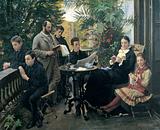
P.S. Krøyer: 'The Hirschsprung family portrait', 1881. The Hirschsprung Collection
The tobacco manufacturer
Heinrich Hirschsprung’s family was of German-Jewish origin. His father, Abraham Marcus Hirschsprung, who originally came from Friedberg near Frankfurt, set up a tobacconist’s shop in the end wall of the prestigious Hotel d'Angleterre in Kongens Nytorv in Copenhagen in 1826. However, it was not until his sons Bernhard (1834–1909) and Heinrich Hirschsprung (1836–1908) took over the company in 1859 that it grew into a modern enterprise specialising in the manufacture of cigars at its own factory in Tordenskjoldsgade – entirely in keeping with the ‘Wirtschaftswunder’, the process of industrialisation that transformed Copenhagen into a modern city in the 1870-80s.
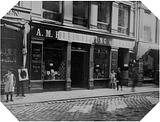
The Hirschsprung brothers were enterprising businessmen. In 1870 they opened a new, modern shop in Østergade 6. You can still find the place as you walk down the main pedestrian street of Copenhagen, Strøget, even though it no longer sells tobacco.
The marriage
In 1864 Heinrich Hirschsprung married Pauline Jacobson (1845–1912), who was born into a wealthy and highly devout Jewish family. Pauline was an orphan, and her legal guardian refused to consent to their marriage. Heinrich was a merchant, which made him an unsuitable match for Pauline, who – according to the guardian – belonged to a more refined class. When war broke out in 1864, the guardian, a military doctor, had to go to the frontlines, and the young couple seized this opportunity to get married in his absence. The newlyweds settled on the corner of Højbro Plads, where their five children were born. They numbered four sons: Robert Daniel (1865–89), Oscar Heinrich (1867–1945), Ivar Lykke (1868–1894) and Einar Aage (1869–1909) and a daughter, Ellen Frederikke (1870–1948). The family later moved to a larger flat in Bredgade.
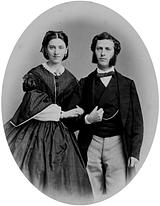
Wedding portrait of Pauline and Heinrich Hirschsprung.
The collection
Like their flock of children, the Hirschsprungs’ art collection grew steadily. They made their first purchase in 1866, and from that point on things progressed rapidly. The family began to find friends among artists and other figures on the cultural scene, and their home became a rallying point for the art and music scene.
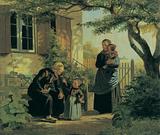
Julius Exner’s A Young Girl lets an Old Man sniff a Flower, circa 1856, was the first painting that Heinrich Hirschsprung ever bought. Many others followed, and over time he and his wife’s tastes were informed and shaped by the new tendencies in the art world.

In 1881, P.S. Krøyer painted the entire Hirschsprung family gathered on the balcony of their summer residence at Svanemøllen outside of Copenhagen.
The portrait of the Hirschsprung family was made immediately upon Krøyer’s return from several years of study abroad. Left to right we see the sons Ivar and Aage; the patriarch of the family, Heinrich, with Oscar joining his father in perusing the sketchbook for the portraits featured in the painting; the eldest son, Robert, with the newspaper; and to the far right Pauline and their daughter, Ellen, who is the only one to look directly out at us. It was Pauline who gave this family portrait to the museum after Heinrich’s death. It was a private picture that was never intended for public display, and only much later was the painting moved from the director’s office to the exhibition rooms. It was quite typical of Hirschsprung to support artists, especially Krøyer, by giving them commissions, and he had a nose for sniffing out art in the artists’ own studios.
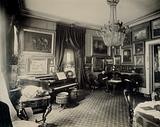
Aage and Robert Hirschsprung in their parent’s home in Bredgade, Copenhagen.
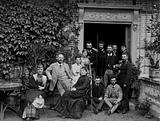
The Hirschsprungs often entertained artists and musicians in their summer residence north of Copenhagen. Here we find the company assembled after a game of billiards in the summer of 1888. Behind Pauline, seated in a black dress, is the Hirschsprungs’ daughter Ellen. P.S. Krøyer stands in the centre of the group in the doorway.
In the home of the Hirschsprung family
In his memoirs, the writer Svend Leopold, who was among the guests invited into the Hirschsprungs’ home, offers a vivid description of life in Bredgade, where Hirschsprung would generously invite artists and other cultural figures:
The home of the Hirschsprungs must surely have been the fairest in all of Copenhagen. All of the paintings now housed in Hirschsprung’s Musæum once hung there in the high-ceilinged rooms with their beautiful plasterwork, arrayed from floor to ceiling, and when the electric chandeliers were lit at night, and the house was full of guests, there was something extraordinary, even festively glittering about this rich home, which resembled no other ...